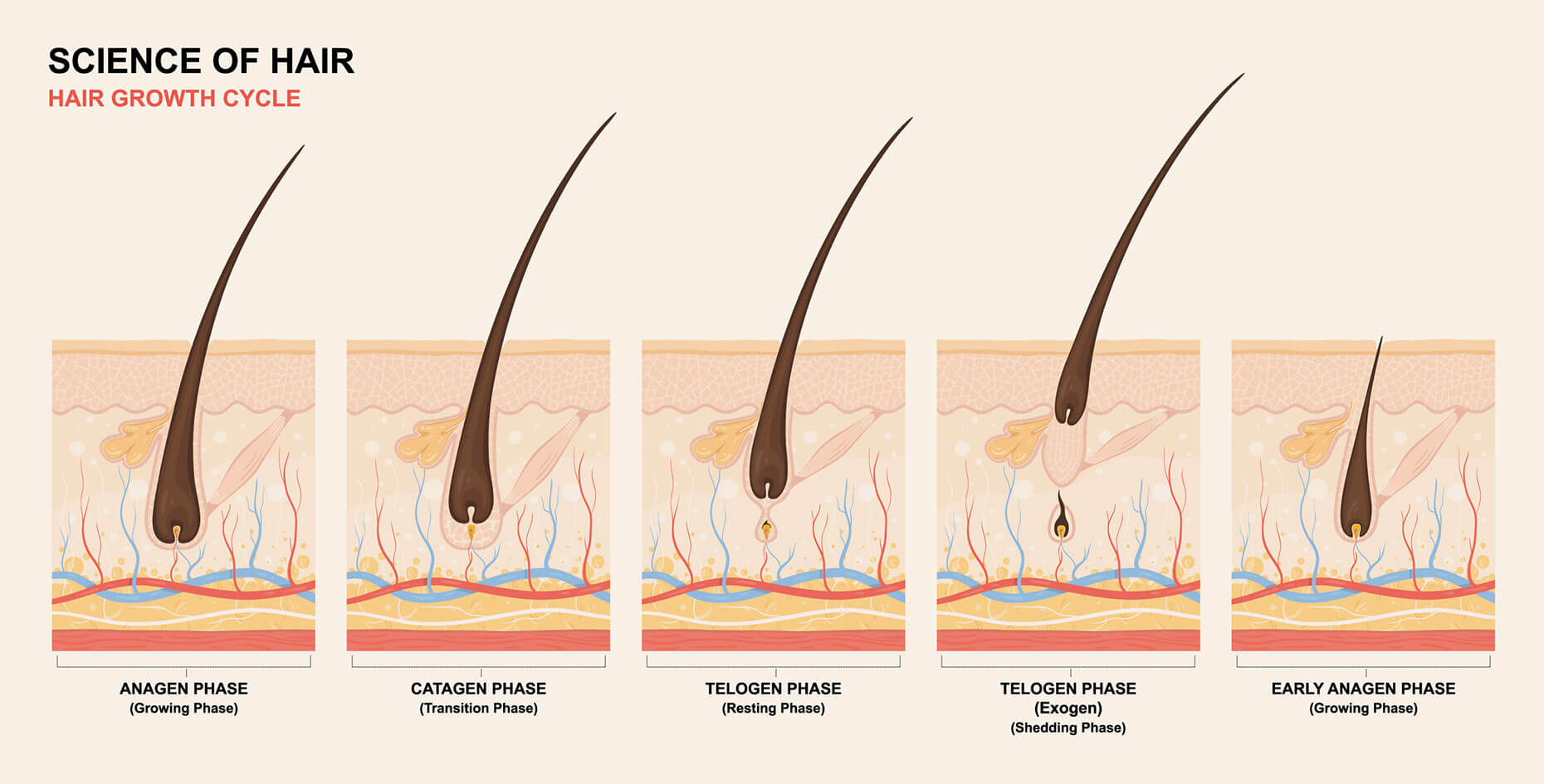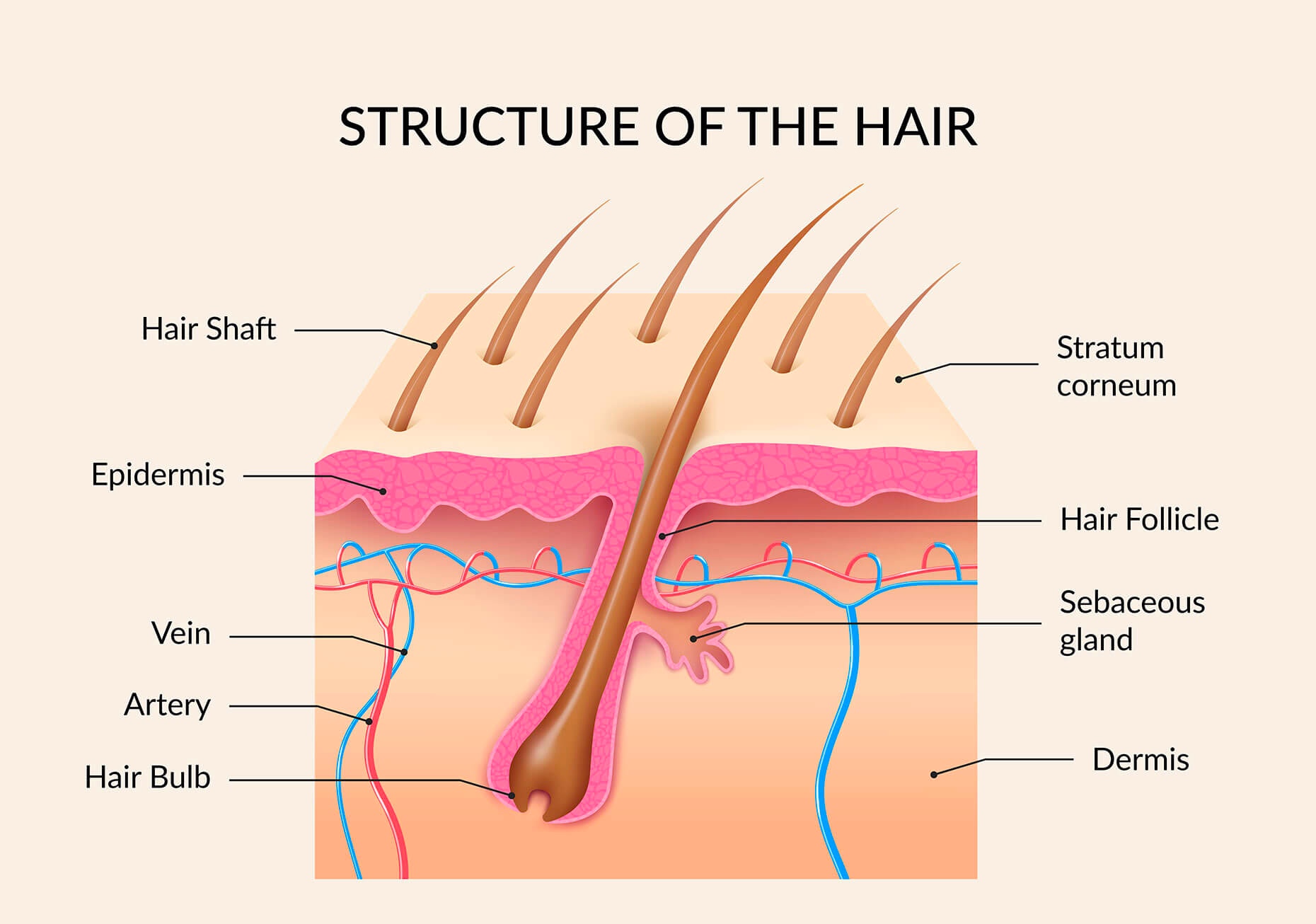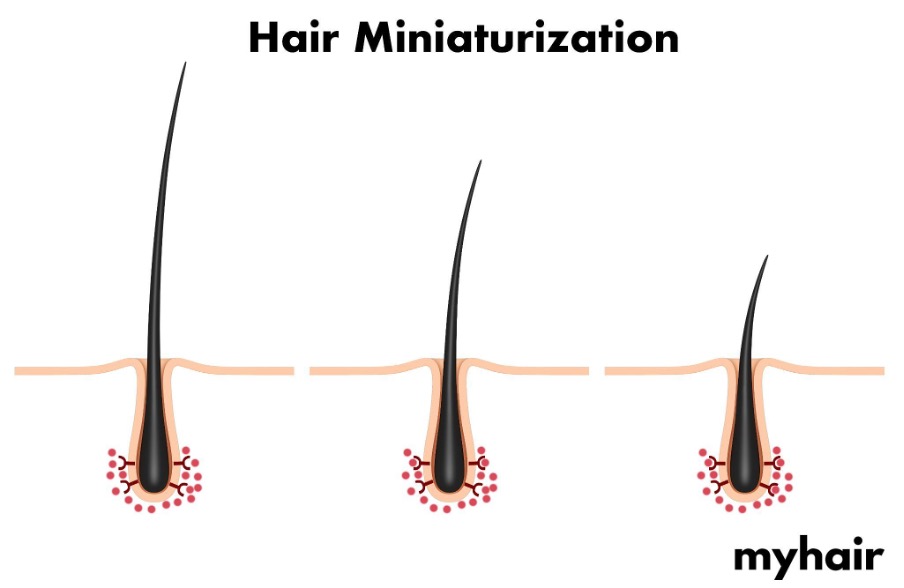Everyone knows what hair is – it’s all over your body. Each one of those individual hairs comes from a hair follicle.
Hair follicles are essentially small cavities in your skin. Each follicle typically produces a single strand of hair (though some people may have some hair follicles that produce two or more hairs at a time).
Your hair is made up of dead cells – but your hair follicles are alive! They go through repeated cycles of growth, shrinking, and rest in order to produce hair throughout your life.
Hair vs. hair follicles
Sorry to break it to you, but your beautiful, luscious locks of hair are dead. Each hair strand is just a thin, flexible tube that’s mostly keratin. Keratin is a type of protein that’s found in various cells throughout your body: particularly in your hair, nails, and skin.
If you were to dive deeper into your skin, though – specifically at the point that each strand of hair emerges from – you’d find a hair follicle. What is a hair follicle? Well, this is the part of your hair that’s alive. Although it’s hidden, the hair follicle is actually the most important part of hair since it allows it to grow.
What is the role of the hair follicle?
According to a study in the International Journal of Dermatology, hair follicles are made of two main structures: an outer root sheath and an inner root sheath. The outer root sheath is home to a variety of different stem cells.
The inner root sheath anchors hair to its respective follicles. This layer is a bit more complex as it’s made of various different layers. The cells in these layers produce keratin and other proteins that help support hair growth.
Finally, each hair follicle also contains a hair bulb, which is the part of the follicle that actually makes each hair. The part of the hair bulb that’s nestled deeper in the hair follicle has a variety of undifferentiated cells – which are kind of like stem cells. In contrast, the upper region of the hair bulb has differentiated cells – which means that they’re no longer stem cells and have chosen to live their lives as one specific cell type.
As the cells from the hair bulb move upward, they emerge as hair strands. The individual hair strands, known as hair shafts, are pushed out by the inner root sheath in the hair follicle. This results in a growth rate of about 1 centimeter (0.4 inches) per month.
How do hair follicles produce hair?
The primary hair follicle function is to grow hair. This isn’t as simple as it sounds, though. Hair growth occurs because of a variety of activities that happen deep inside the layers of the hair follicle. This is generally referred to as the hair growth cycle.
The hair growth cycle is made up of three phases: anagen, catagen, and telogen. The anagen phase, which is also known as the growth phase, can last for several years. The catagen phase, which is sometimes called the transitional phase, involves the gradual shrinking and changing of the hair follicle. This phase typically lasts just a few weeks.
The telogen phase, also called the resting phase, can last up to eight months. It ends with the hair strand falling out (the final phase, known as the exogen phase). A few weeks later, the same hair follicle starts the process up again. A new growth phase starts up once the follicle stimulates stem cells from the outer root sheath.

The hair growth cycle regulates hair growth rate and determines when hair loss should occur
Can your hair follicles just stop working?
Your hair follicles usually don’t just stop working – it’s a little more complicated than that. Usually, hair loss is caused by a disruption to an aspect of the hair growth cycle.
A Journal of Drugs in Dermatology study reported that internal factors, like hormonal imbalances in the body, can affect your hair follicles. In fact, this is part of what happens to people who have male pattern baldness. External factors, like stress, are also able to affect the hair growth cycle. When this happens, the hair growth cycle will be altered, but the change may occur in a different way.
For example, after a sudden death in the family, you may feel shocked and very stressed. As a consequence, hairs that are in the anagen phase may suddenly stop growing and move to the telogen phase. If this happens, you’d likely experience a short, sudden burst of hair loss. Fortunately, hair follicles that stop working for this reason will eventually begin producing new hair and your hair growth cycle will usually go back to normal.
That being said, hair follicles can also stop working for other reasons. For instance, physical damage to hair follicles might also cause them to stop working. A head injury can hurt a group of hair follicles and produce a scar on your head. The scar tissue may result in irreversible damage to the hair follicles in that area, preventing them from functioning or growing hair again.
Hair follicles can also be attacked. Your own body might attack your hair follicles if you have an auto-immune condition called alopecia areata. This is hardly the only way this could happen though. A medication you’re taking might also attack your hair follicles. Even a fungus that’s causing a skin infection could affect your hair follicles.
In cases like these, you’ll see a range of different hair loss symptoms depending on the cause of the problem. Your hair might start thinning — a common problem seen in male pattern hair loss. When this occurs, it could mean that your hair follicles are producing thinner or smaller hair strands or less hair in general. You may also lose hair in specific areas of your scalp.
Hair loss treatments if your hair follicles aren’t working
A lot of hair loss is treatable. If you think you’re experiencing an issue with your hair follicles, talk to your doctor. For many people, your hair follicle will usually go back to functioning normally as soon as you treat the infection or stop the medication that’s causing the hair loss.
Other people may need a bit more help. Male pattern hair loss has a variety of different treatment options. The Food and Drug Administration has approved hair loss treatments like minoxidil, finasteride, and low-level laser therapy, and both natural and combination treatments are currently being researched.
Conditions that are autoimmune, like alopecia areata, can be hard to treat since the severity of the problem depends on your body’s immune response. Other conditions, like hair loss caused by scar tissue, have limited treatment options. People with this particular problem may only be able to use hair transplantation or cosmetic treatment options.
Takeaway
Although they’re buried in your skin, hair follicles are the most important part of hair growth. They regulate the hair growth cycle and determine how much hair you’ll grow, along with how healthy your hair will be.
Problems that affect your hair follicles (or the hair growth cycle) are likely to cause hair loss. Talk to your doctor if you think you’re losing hair. Hair loss can usually be treated as long as it’s dealt with early.





